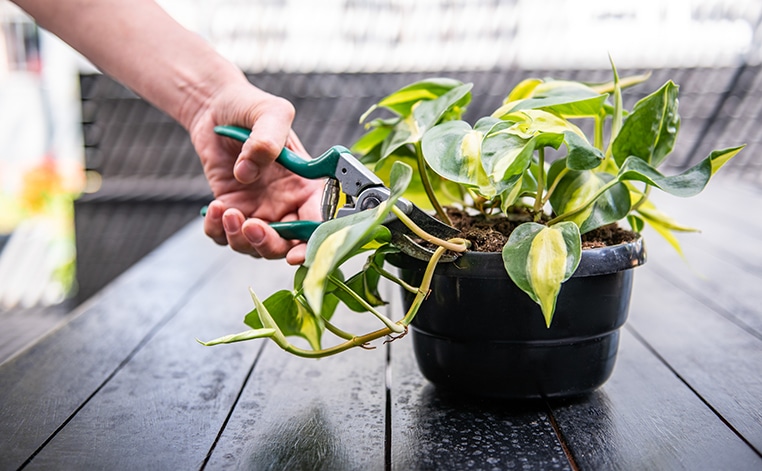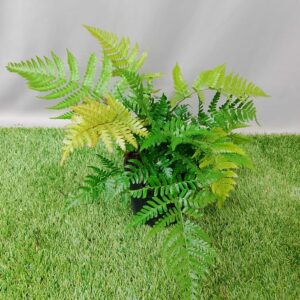A step-by-step guide to plant propagation
DIY and how-to

Plant propagation is a wonderful way to expand your garden. It’s cost-effective and easy, and will take your gardening skills to the next level. Follow this step-by-step guide to propagating plants and you’ll soon be growing new, healthy plants
What is plant propagation?
Propagation is the process of growing a new plant from parts of an existing one. It’s a rewarding and valuable skill that will help you to expand your existing collection. There are three easy ways to propagate your plants: cuttings, root division and runners.
- PROPAGATING WITH CUTTINGS
Growing plants from cuttings is a common propagation technique and involves using a leaf, stem or root from the parent plant. It is well suited to indoor plants and herbs. The snake plant, daisies, lavender, bougainvillea and succulents are easily propagated via cuttings.

Step-by-step guide to propagating with cuttings:
- Choose a healthy, established plant from which to take a cutting.
- Cut off stems measuring roughly 30–60cm in length, about 2mm below the lowest node. (A node is the part of the stem where the leaves and lateral buds are attached to the stem. They usually appear as slightly raised portions of the stem.)
- Each cutting should have 2–4 leaves at the top and 1–3 growth nodes beneath the leaves.
- Cut the stem into three sections of about 10cm each.
- Dip the bottom ends of the cuttings into water.
- Fill a clean seedling tray with river sand and plant the cuttings in the tray. Water well.
- Place the seedling tray in bright, indirect light and water every second day.
- Your cutting should develop roots within a month, and after two to three months will be ready for transplanting into a larger container.
A number of indoor plants, including pothos, monstera and philodendron, can be propagated by placing the cutting in water. Replace the water every 2 weeks.

- PROPAGATING WITH ROOT DIVISION
Plant propagation through root division separates the parent plant into smaller sections in order to form new plants. This technique can only be done with plants that have multiple stems emerging from a central crown. Some of these plants include ornamental grasses and perennial flowers such as the hosta, catnip, daylily and viola.
Step-by-step guide to propagating with root division:
- Carefully loosen the root structure of the plant. The plant will have many separate stems that are visible and still connected at the root.
- Using a sharp spade or knife, neatly cut between the separate stems.
- Plant each division in soil as quickly as possible and mulch to conserve moisture.
- Return the original plant to its pot or area in the garden. Plant it at the same soil level it was prior to it being removed. Water all plants well.
- PROPAGATING WITH RUNNERS
Runners are specialised, horizontal shoots that give out adventitious roots at the nodes. Since their shoots spread horizontally on the surface of the soil, it makes it easy to use these to grow new plants. Peppermint, hen and chicken, and the spider plant are commonly propagated this way, but this method is also ideal for strawberry lovers.
Step-by-step guide to propagating with runners:
- Select good, strong runners from a healthy parent plant.
- Snip the runner between the nodes of the plant with a sharp knife or secateurs.
- Transplant the runner into fresh ground or a container with good potting soil and compost.
- Water regularly for 2–3 weeks to ensure the soil is kept moist.
- After 4–6 weeks, the plantlet will start to grow its own roots and eventually develop into its own plant.
Plant propagation techniques take time to learn. Some plants are easy to propagate, while others will present a few challenges. Through trial and error, you’ll find the method and plants that work best in your home and garden environment, and will be enjoying progagating (and your new plants!) in no time!
[embedyt] https://www.youtube.com/watch?v=oxS8o5-GPn8[/embedyt]
You might also like
Shop online
-
- Sale!
AGEING STERILIZED 12+ 2KG
- Original price was: R489.99.R441.99Current price is: R441.99.
- Add to cart Learn More
-
FERN AUTUMN 14CM
- R129.99
- Add to cart Learn More
-
ALOE VERA 2KG
- R44.99
- Add to cart Learn More




